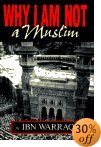|
| Home | About Kashmir Herald | |
Volume 2, No. 5 - October 2002 |
|
| Featured Article |
|
|
|
Suicidal
Restraint Since 1999, a wide variety of initiatives have been taken by the Government of India to bring about an end to the violence in its Jammu and Kashmir state. In spring of that year, PM Vajpayee traveled to Lahore and met with then Pakistani leader Nawaz Sharif. That summit was sabotaged before it even got under way, with then Chief of Army Staff Musharraf orchestrating an invasion of the Kargil heights in India. The Kargil war followed, with India sticking to a self-imposed restraint regarding crossing the LOC. The restraint observed during the hijacking of an Indian Airlines jetliner at the end of that year, in which three Pakistani terrorist leaders were exchanged for about a hundred passengers, was one of the lowest points in India's independent history. With Musharraf firmly in the saddle in 2000, and the newly freed Masood Azhar and Sheikh Omar merrily working in tandem with the ISI and Al Qaeda, the flames of terrorism in J&K were reenergized. The summer of 2000 was marked by large scale massacres by Pakistan-sponsored terrorists in the state. The NDA government in India, continuing with its thread of restraint, came up with a new plan, a unilateral ceasefire on the behalf of Indian security forces. There was no reason to expect such a gimmick to work. Anyone could have predicted that the jehadis would simply use the opportunity to further entrench themselves in the state. While a section of the Hizbul group responded to the ceasefire for a short while, they were immediately countermanded by their masters in Pakistan. In the summer of 2001, with the situation building explosively, Vajpayee invited Musharraf to the Agra summit. There was again no reason to put stock in Pakistan's sincerity. It was again India's latest folly of believing that its western neighbor believed in peaceful coexistence. The summit failed, as any analyst with comprehension of sub-continental history would have predicted. The bloodbath that followed was a prelude to September 11. The jehadis had started believing that Pakistan's increased boldness in supporting terrorism and its possession of nuclear weapons made them invulnerable. On top of that, American refusal to see the writing on the wall was a blank check to implement against the US what the skills the jehadis had honed against India. The US-led operations in Afghanistan bottled up most of the jehadis in Pakistan-controlled areas of Kashmir. From there, with Pakistani encouragement and support, they concentrated on India. The attacks on the Srinagar Assembly and New Delhi's Parliament buildings were designed to test the waters. Would the US tolerate terrorism after September 11, as long as Americans were not directly affected, and would India continue with restraint? The answer to both questions turned out to be yes. Hence Musharraf decided he could get away with wreaking terrorism in India, even as he became a "tight" anti-terrorist ally of George W. Bush, who is more interested in going after daddy's tormentor than securing the world against global terrorism. Thus during 2002, Musharraf has repeatedly used the terrorism weapon in Jammu and Kashmir, secure in the knowledge of India's undying love for restraint. He knows the Indian government is frozen in that philosophy, and US coddling of the dictator has only made him bolder. India's latest love affair with restraint is its determination to hold elections in J&K even as Musharraf's proxies carry out a bloodbath in the state to thwart the voters. India wants to show that it believes in the democratic process, and contrast it with Pakistan's use of terrorist means to grab Kashmir. But who is the audience India is trying to convince of its sincerity? If it is the US, the audience is not interested. The Bush people know exactly what Musharraf and the ISI are up to. After all Pakistan is teaming with US spooks. If the audience is the separatist section in the valley, they are not going to be happy until the state is rid of the Indian military and non-Muslims, so it can become the latest bastion for spreading Islam. After this long line of missteps in the name of restraint, it should be now clear to the somnoloscent Indian government that the restraint mantra has been squeezed dry. The enemy thrives on that restraint, and there is no glory for a nation that gets Balkanized while on a diet of restraint. Experts are beginning to question this suicidal philosophy. If India continues down the current path, it is doomed to be broken up into several pieces that will each be Islam's latest conquest. There are various options open to India, if it chooses to avert the inevitable. Experts like B. Raman have stressed covert action in Pakistan. Such action would need patience and sustenance. India's ability to effectively penetrate Pakistan covertly is questionable, however. Another option is overt, but limited and punitive action. A beginning can be made with lightning strikes on terrorist concentrations just across the LOC. Pakistan will most likely respond and try to escalate it and thus involve the US. If India clearly links such action to anti-terrorism operations, the onus will shift to Pakistan to exercise restraint. US officials would not want a new theater opened up so close to their plans for Iraq, and may turn the screws on Pakistan to hold back. The results of such an action are still unpredictable, mainly due to Pakistan's rapidly growing missile capability. In order to mitigate the risks, India needs to rapidly install a missile defense system, whether it is based on the Israeli Arrow or the Russian S300, irrespective of cost. In any case, risks of action now will still be considerably less than continuing restraint while Pakistan builds up a nuclear missile arsenal that will not be deterred by any missile defense system. |
 |
 |
 |
|
|
Archives
| Privacy Policy |
Copyrights
|
Contact
Us | |
||